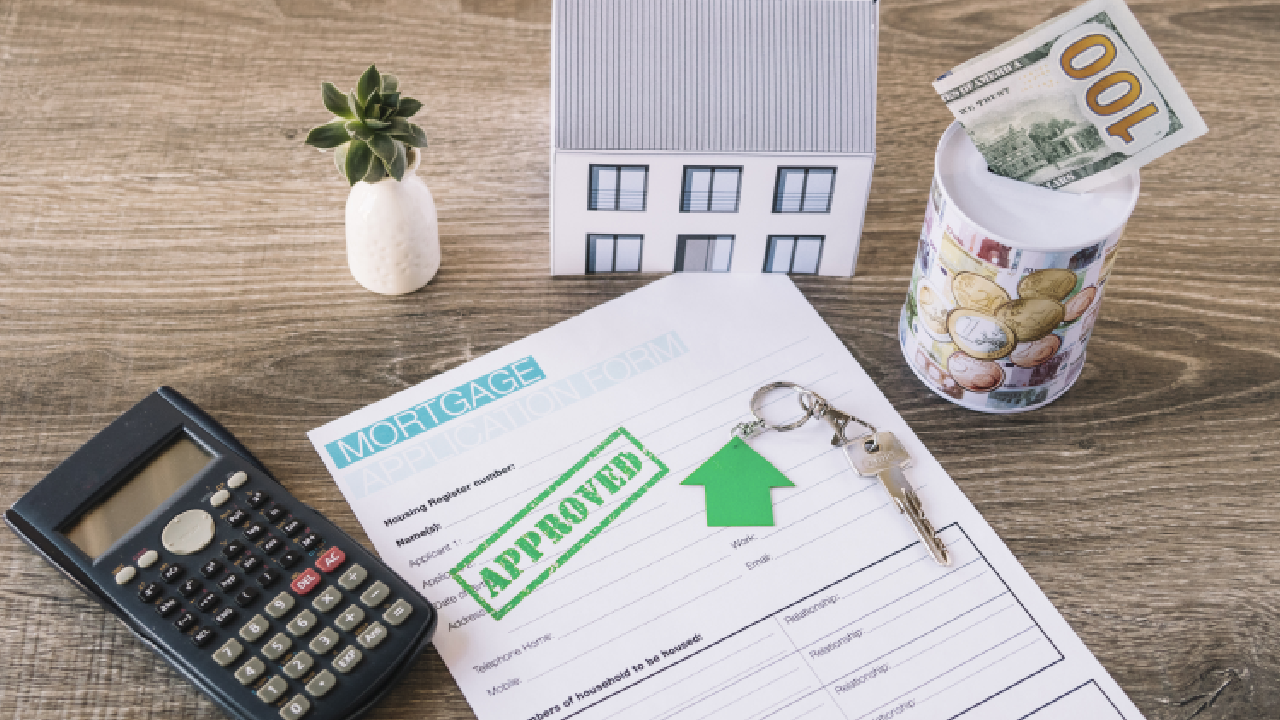Commercial Mortgage Lenders: The Pros and Cons of Debt Financing
Commercial mortgage lenders are crucial to the real estate market. They provide necessary loans for buying, developing, or refinancing properties. These lenders focus on lending large amounts of money to businesses and investors who want to grow their commercial real estate investments.
If you’re interested in investing in commercial real estate, it’s important to understand the details of debt financing. Choosing between debt and equity financing can have a major impact on your investment plans and financial results.
Key Considerations for Commercial Real Estate Debt Financing:
- Debt financing offers structured repayment schedules and fixed interest rates
- Lenders receive priority in payment distributions
- Property serves as collateral for the loan
- Interest payments may be tax-deductible
The world of commercial real estate debt financing has its ups and downs. You can enjoy steady returns and get paid back before others, but you also need to think about the risks like potential defaults and limited returns. Your success in commercial real estate investing often relies on making smart choices about financing options and understanding how they affect your long-term investment goals.
Understanding Commercial Real Estate Debt Financing

Commercial real estate debt financing is a way for lenders to provide money to borrowers for property-related transactions. These loans are secured by the property itself, which means that if the borrower fails to repay, the lender can take ownership of the property.
Key Components of Real Estate Debt Financing:
- Purchase Loans: Used to acquire new commercial properties
- Refinancing: Replaces existing loans with new terms
- Construction Loans: Funds new building projects
- Bridge Loans: Short-term financing for immediate property needs
The world of commercial property lending offers a variety of loan options designed to meet specific business requirements:
1. Traditional Commercial Mortgages
- 5-30 year terms
- Fixed or variable interest rates
- Typically requires 20-30% down payment
2. SBA Commercial Real Estate Loans
- Government-backed financing
- Lower down payments (10-15%)
- Extended repayment terms
3. Hard Money Loans
- Asset-based lending
- Quick approval process
- Higher interest rates
- Shorter terms (1-3 years)
These lending options come with specific requirements:
- Credit score minimums
- Debt service coverage ratios
- Loan-to-value restrictions
- Cash reserve requirements
The type of loan you choose depends on factors like property type, intended use, financial position, and business goals. Each option presents different qualification criteria, interest rates, and terms that align with various investment strategies.
Pros of Commercial Real Estate Debt Financing

Commercial real estate debt financing offers significant advantages for investors seeking stable returns and risk mitigation. Let’s explore these key benefits:
1. Repayment Priority
Debt investors hold a powerful position in the capital stack, securing first claim rights to property-generated income and asset value. This priority structure creates a protective shield for lenders:
- First Position Claims: Lenders receive payments before any equity investors or junior debt holders
- Secured Interest: The property itself serves as collateral, providing tangible asset backing
- Legal Protection: Foreclosure rights enable lenders to take control of the property if borrowers default
The repayment hierarchy works as follows:
- Senior Debt Holders
- Mezzanine Debt
- Preferred Equity
- Common Equity
This structured approach ensures that even in challenging market conditions, debt investors maintain strong recovery potential. A real-world example shows this advantage: In a $10 million property with $7 million in debt financing, the lender receives full repayment before equity investors see any returns.
Additional Security Measures:
- Personal guarantees from borrowers
- Cross-collateralization options
- Reserve accounts for taxes and insurance
- Regular financial reporting requirements
The repayment priority benefit extends beyond default scenarios. During normal operations, debt service payments take precedence over equity distributions, creating reliable income streams for lenders.
This prioritized position makes commercial real estate debt financing particularly attractive for risk-averse investors seeking capital preservation. The structured nature of these investments provides clear documentation of rights and remedies, establishing a solid foundation for asset protection.
2. Stability and Predictable Income
Fixed interest returns are a key advantage of commercial real estate debt financing. Unlike equity investments that can vary based on market conditions, debt investments offer consistent and predictable returns through fixed interest rates.
Key Benefits of Fixed Returns:
- Reliable monthly or quarterly income streams
- Predetermined payment schedules
- Protection from market volatility
- Simplified financial planning and forecasting
Commercial real estate loans typically generate returns through regular interest payments at rates ranging from 4% to 12%, depending on the property type and risk profile. This predictability allows investors to:
- Plan future investments with confidence
- Maintain stable cash flow
- Meet ongoing financial obligations
- Build diversified investment portfolios
The stability extends beyond just regular payments. Real estate debt investments offer protection through:
Built-in Security Measures:
- Fixed interest rates for the loan duration
- Contractually obligated payment schedules
- Clear repayment terms
- Legal protections through loan agreements
For investors seeking reliable income streams, commercial real estate debt presents an attractive option. While equity investments might offer higher potential returns during market upswings, they lack the consistency and predictability that debt financing provides through its structured payment systems and fixed-rate returns.
3. Shorter Holding Periods
Commercial real estate debt financing offers a significant advantage through its shorter holding periods compared to equity investments. While equity investments typically require 5-10 years for optimal returns, debt investments can mature within 6 months to 2 years.
These condensed timeframes create several benefits for lenders:
- Rapid Capital Redeployment: You can reinvest your capital into new opportunities more frequently, potentially increasing your annual returns
- Enhanced Portfolio Flexibility: The ability to adjust your investment strategy based on market conditions and emerging opportunities
- Reduced Market Risk Exposure: Shorter terms minimize your exposure to long-term market fluctuations and economic cycles
A typical commercial real estate loan might have these holding periods:
- Bridge Loans: 6-18 months
- Construction Loans: 12-24 months
- Mini-Perm Loans: 2-3 years
The quick capital turnover in debt financing allows you to:
- Capitalize on changing market conditions
- Diversify investments across multiple properties
- Maintain liquidity for emergency opportunities
- Adjust interest rates to match current market conditions
This accelerated investment cycle proves particularly valuable in dynamic real estate markets where timing and flexibility can significantly impact returns.
4. Diverse Risk Profiles
Commercial real estate debt financing offers a range of investment options designed for various risk preferences. You can choose from these main types of debt instruments:
1. Senior Secured Loans
- Lowest risk profile
- First lien position on property
- Typical LTV ratio: 50-65%
- Conservative return rates: 4-7%
2. Mezzanine Debt
- Mid-level risk exposure
- Second lien position
- LTV ratios up to 85%
- Higher yields: 8-12%
3. Bridge Loans
- Higher risk category
- Short-term financing solutions
- LTV ratios: 65-80%
- Returns ranging from 8-15%
The risk-reward balance varies across different property types. Office buildings generally have lower risk profiles with stable tenant bases, while hospitality properties have higher risk due to operational fluctuations. You can adjust your investment strategy by combining various debt instruments – allocating a larger portion to senior secured loans for stability while designating a smaller percentage to higher-yielding bridge loans.
This flexibility enables you to create a debt portfolio that aligns with your specific risk tolerance. A risk-averse investor might concentrate on senior secured loans backed by Class A office properties, whereas those aiming for higher returns could investigate mezzanine debt opportunities in emerging markets or developing properties.
Cons of Commercial Real Estate Debt Financing

1. Default Risk
Default risk is one of the significant disadvantages of commercial real estate debt financing. It occurs when a property owner fails to meet their loan obligations, leading to potential financial losses for investors. This risk is inherent in any debt investment, emphasizing the importance of thorough research before committing capital.
What Happens During a Default?
- Foreclosure Process: If a borrower defaults, lenders often initiate foreclosure proceedings to recover the outstanding loan amount. This process can be lengthy and costly, potentially eroding the value of the investment.
- Loss of Income: Investors may experience an immediate loss in expected income streams from interest payments, impacting overall returns.
- Property Devaluation: In some cases, properties may devalue during the foreclosure process, further diminishing recovery values for investors.
Potential Losses for Investors
- Partial Recovery or Total Loss: Depending on factors like property value and market conditions at the time of default, investors might only recover a portion of their investment or face a total loss if the property’s sale proceeds do not cover the outstanding debt.
- Legal and Administrative Costs: Engaging in foreclosure involves various costs that can reduce net recovery amounts. Legal fees and administrative expenses are common burdens borne by lenders during default situations.
Understanding these risks associated with borrowing is crucial when evaluating debt investment opportunities. Assessing a borrower’s creditworthiness and analyzing market conditions are essential steps in mitigating default risks. Diversification across different property types and locations can also help spread risk and protect against potential losses.
Investors must weigh these considerations carefully to make informed decisions in commercial real estate debt financing. Balancing potential rewards with inherent risks ensures a strategic approach to building a resilient investment portfolio.
2. Interest Rate Sensitivity
Interest rate fluctuations create significant challenges for commercial real estate debt financing. When rates rise, borrowers face increased monthly payments on variable-rate loans, directly impacting their cash flow and ability to service debt.
Consider these key impacts of interest rate changes:
- Refinancing Challenges: Higher rates make refinancing existing loans more expensive, potentially forcing borrowers to accept less favorable terms
- Property Valuation Effects: Rising rates typically lead to higher capitalization rates, which can decrease property values
- Debt Service Coverage: Increased interest expenses can strain the debt service coverage ratio, making it harder to meet lender requirements
The relationship between interest rates and investment returns works in multiple directions:
Variable Rate Loans
- Immediate impact on monthly payments
- Unpredictable cash flow patterns
- Potential budget strain during rate hikes
Fixed Rate Loans
- Locked-in rates become less attractive in falling rate environments
- Prepayment penalties may prevent refinancing advantages
- Portfolio value diminishes when market rates increase
Real-world scenarios show that a 1% increase in interest rates can reduce a property’s value by 5-10%, creating potential losses for both lenders and borrowers. This sensitivity affects loan-to-value ratios and might trigger covenant violations or margin calls in certain lending structures.
3. Limited Upside Potential
Debt financing in commercial real estate comes with a significant trade-off: predetermined returns. When you invest through debt instruments, your returns are capped at the agreed-upon interest rate, regardless of the property’s performance or market appreciation.
Consider this scenario:
- A property purchased for $1 million appreciates to $1.5 million
- Debt investors receive their fixed 8% annual return
- Equity holders capture the entire $500,000 appreciation value
This built-in ceiling on returns creates an asymmetric risk-reward profile. While debt investors benefit from payment priority and consistent income streams, they miss out on:
- Property value appreciation
- Rental income increases
- Market growth opportunities
- Tax benefits from property ownership
- Potential development upside
The fixed nature of debt returns becomes particularly noticeable in high-growth markets or during inflationary periods. A property generating 20% annual returns still only pays debt investors their predetermined rate, while equity investors capture the excess performance.
This limitation extends beyond direct property performance. Debt investors also miss opportunities in:
- Property repositioning gains
- Development profit margins
- Operating efficiency improvements
- Strategic property management benefits
- Market timing advantages
The predictability of debt returns trades potential wealth creation for stability – a key consideration when evaluating commercial real estate investment strategies.
4. Market and Property Type Risks
Different types of commercial properties have their own unique risks that can greatly affect debt investments. Here are the main risk factors for different property categories:
Retail Properties
- Shopping centers are facing more competition from online shopping
- When tenants go bankrupt, it can lead to sudden increases in empty spaces
- The performance of retail properties depends on their location, which creates uneven risk distribution
Office Buildings
- The trend of remote work is impacting how many offices are occupied
- Class B and C office buildings have a higher risk of being vacant
- Rental rates and property values are influenced by specific factors in each market
Industrial Properties
- Disruptions in the supply chain are affecting the demand for warehouses
- Manufacturing facilities need special configurations to operate
- Environmental regulations can result in unexpected costs for industrial properties
Economic Cycle Impact
- During recession periods, property values usually decrease
- Changes in interest rates can affect refinancing options for borrowers
- The recovery timelines for properties are influenced by local market conditions
Geographic Considerations
- The risks of natural disasters vary depending on the region
- Shifts in population can impact the demand for certain properties
- Local regulatory changes can have an effect on how properties are operated
These risks specific to the market and property can impact a borrower’s ability to make loan payments. By having a clear understanding of these risk factors, lenders can better assess potential investments and create loan terms that are suitable. Effective risk assessment involves looking at both the current state of the market and predicting future trends for specific types of properties in targeted areas.
Conclusion
Commercial real estate debt financing offers distinct paths for investors seeking property-backed investments. The market presents two primary access routes:
Public Market Options:
- Mortgage REITs trading on major exchanges
- Publicly traded debt funds
- Commercial mortgage-backed securities (CMBS)
Private Market Channels:
- Private equity firms
- Direct lending platforms
- Commercial mortgage brokers
Each avenue brings unique characteristics to the table. Public options provide liquidity and transparency, while private channels often yield higher returns with increased minimum investment requirements.
The structure of these investments varies significantly:
- Interest-only payments
- Amortizing schedules
- Fixed vs. variable rates
- Term lengths from 6 months to 30 years
Your choice between public and private debt investments should align with your:
- Risk tolerance
- Investment timeline
- Desired returns
- Liquidity needs
The commercial real estate debt market continues to evolve, offering sophisticated investment vehicles for both institutional and individual investors. Understanding these options, along with their inherent risks and benefits, positions you to make informed decisions in the commercial real estate debt landscape.
Remember: Success in commercial real estate debt investing requires careful consideration of property types, market conditions, and investment structures – whether you’re working with mortgage REITs, private equity firms, or commercial mortgage brokers.
Ready to take your real estate ventures to the next level ? Visit our Services page to learn how we can help you with expert real estate advisory and capital raising strategies. If you have any questions or need personalized guidance, don’t hesitate to reach out to us through our Contact page.
Looking to explore more? Check out our website for additional resources and insights !
FAQs (Frequently Asked Questions)
What is commercial real estate debt financing?
Commercial real estate debt financing refers to the process of obtaining loans specifically for purchasing, refinancing, or constructing commercial properties. It involves various types of loans, such as commercial property loans and business property loans, which are provided by commercial mortgage lenders.
What are the advantages of using debt financing in commercial real estate?
Debt financing offers several advantages, including repayment priority over equity investors during liquidation, stability and predictable income through fixed interest returns, shorter holding periods leading to quicker capital turnover, and diverse risk profiles that allow investors to choose based on their risk tolerance.
What risks are associated with commercial real estate debt financing?
The primary risks include default risk if the property owner fails to meet loan obligations, interest rate sensitivity affecting borrowing costs and returns, limited upside potential compared to equity investments due to capped returns at agreed-upon interest rates, and market and property type risks that vary based on economic conditions.
How does repayment priority work in commercial debt financing?
In commercial debt financing, debt investors are prioritized over equity investors when it comes to cash flow distributions and liquidation proceeds. This means that in the event of financial distress or property sale, debt holders will receive their payments before any distributions are made to equity holders.
What impact do interest rates have on commercial real estate loans?
Interest rates significantly influence both borrowing costs and the returns on debt investments. Fluctuations in market interest rates can affect the overall cost of loans and may lead to changes in investor returns, making it crucial for investors to monitor rate trends when considering debt financing.
What types of properties carry varying levels of risk in commercial real estate investing?
Different types of commercial properties—such as retail spaces, office buildings, and industrial facilities—carry different levels of risk based on factors like location, market demand, and economic conditions. Investors must assess these risks when choosing properties for debt financing to align with their investment strategies.


